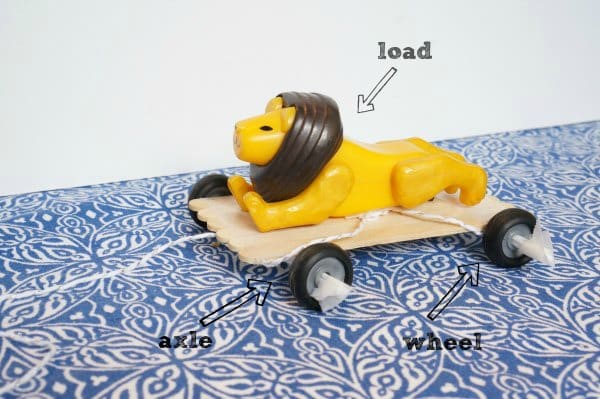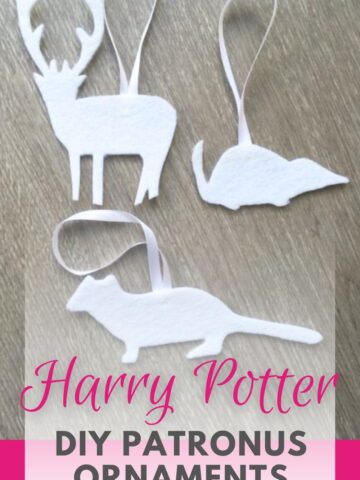Load? Effort? Fulcrum? Pulley? Do these words sound familiar? If your child is learning about simple machines then you have undoubtedly heard these words. What exactly do they all mean? What is a simple machine? Sometimes the best way to learn is with a fun STEM activity for kids.

Disclosure: There are Amazon Affiliate links in this article which means, at no additional cost to you, we could receive compensation for our recommendations. You can read our full disclosure policy on our Disclosure Page for more details.
Before we can start working on our challenge we need a good book to teach us about simple machines. The book How Do You Lift a Lion? by Richard E. Wells introduces kids to simple machines. The kids in the book lift a lion using a lever, they move a panda using a cart with wheels and they transport a basket of bananas to a tree full of hungry monkeys using a pulley. So, I put this simple machines challenge to my daughter - find 3 ways to move a lion.
Now we don't have a lion laying about our house, so our lion of choice was a toy. This lion comes from my husband's Fisher-Price circus train set...from the 70's. He is a pretty cool lion. How did we go about making him move?
Simple Machines Activities for Kids
3 Ways to Move a Lion
How to Make a Pulley
craft/popsicle sticks
tape
string
scissors
a branch
toy lion
Okay, first you are going to need a lion to move. Our lion is actually about 40 years old. He is from my husband's Fisher-Price circus set - from when he was a baby! Crazy that my mother in law kept it all of these years. Anyhow, you can find lions as part of toy safari kits. Wherever you get your lion, I'm sure it will be perfect for this STEM challenge.
After brainstorming some ideas, my daughter decided to the first option was to build a pulley from popsicle sticks. A pulley is a simple machine that allows you to lift an item high. She went to work building a platform using popsicle sticks and tape. The platform was built large enough and sturdy enough to hold our lion. The lion is the load that we have to try and lift.



Our pulley worked. We were able to lift the lion up in the air. Now we wanted to move the lion along a path...we would need another simple machine.
How to Make a Wheel and Axle Simple Machine for Kids
plastic or wood coffee stir sticks
scissors
popsicle sticks
tape
string
4 plastic wheels
The next mission was to move the lion from one side of the table to the other. This task followed perfectly after the first one, as we were able to use the same platform as the base for the cart that would hold our lion - the load.






Our wheel and axle simple machine worked! We have lifted the lion straight into the air, we have moved the lion along a path and now we wanted to figure out how to toss our lion into the air. We need to make a lever.
How to Make a Lever with Popsicle Sticks
popsicle sticks
tape
The final attempt at moving our lion was to use a lever. My daughter started this one by making a board, the lever, that the lion, the load, could stand on. The board was 3 popsicle sticks long and 3 popsicle sticks wide.
She then stacked and taped together a pile of popsicle sticks. Two piles, actually. The piled sticks became the fulcrum...the point that our lever sits on and pivots on.
With the fulcrum in place and the lever on top with the lion, she was then able to activate the lever by pressing down, effort on the side of the platform the lion was not standing on.




A few of our other favourite STEM activities for kids


Today's post is part of the Storybook Science series taking place on Inspiration Laboratories. Be sure to head over and check out all the cool books and science activities that are being shared. So many great ideas to inspire your kid's mind.






Trisha @ Inspiration Laboratories says
I love all of the problem solving happening here. Such a fun way to learn about simple machines!